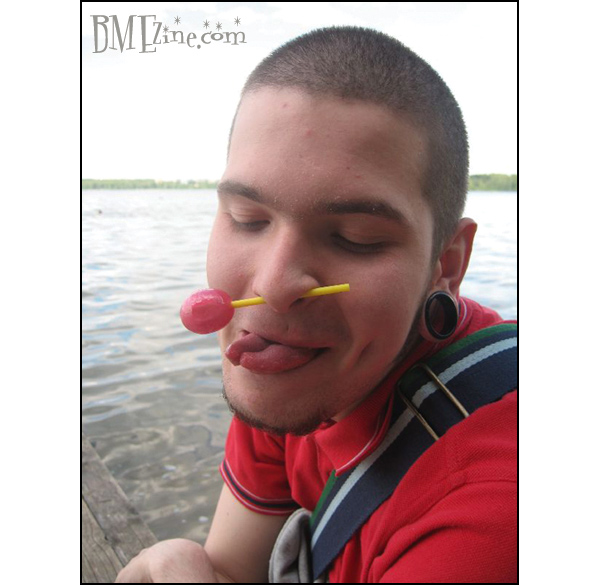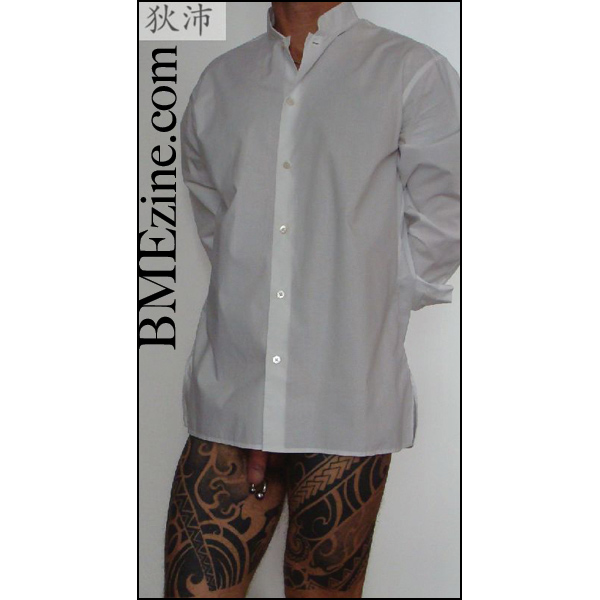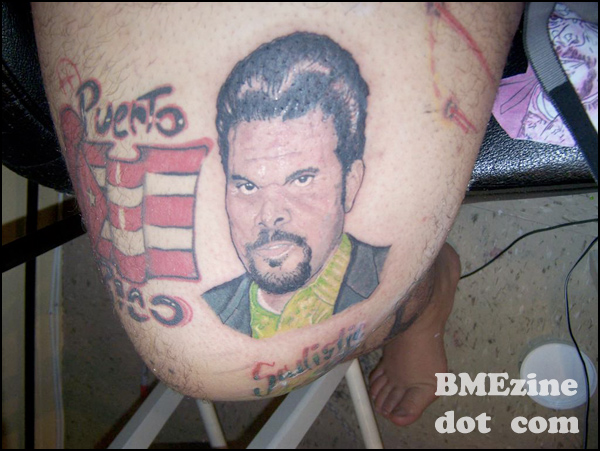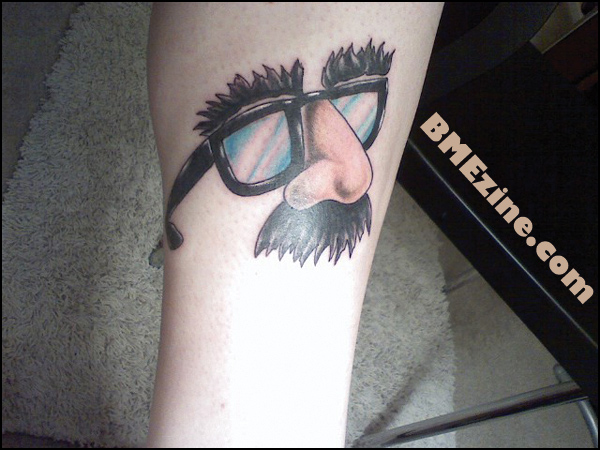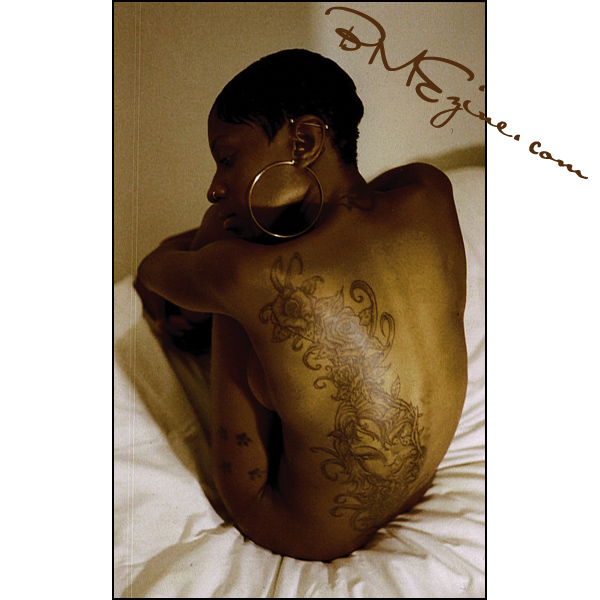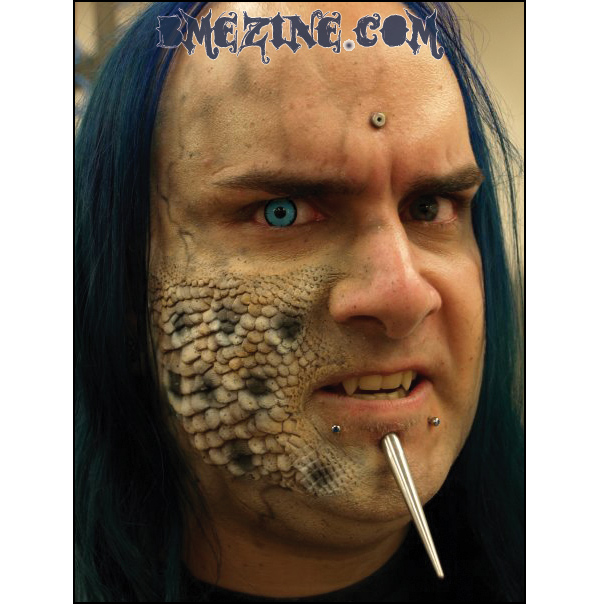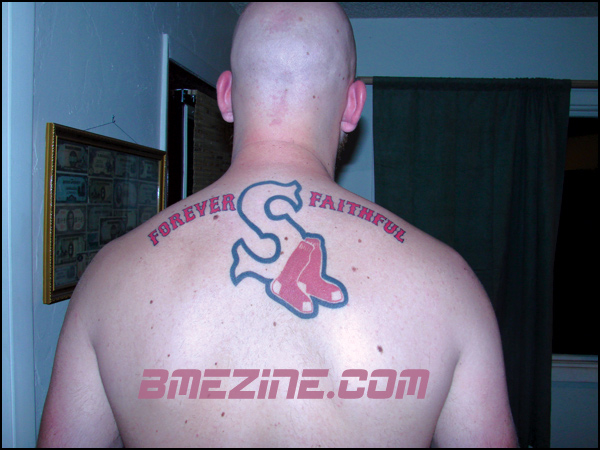Welcome to BME’s Big Question! In this weekly (hopefully) feature, we’re going to ask a handful of the community’s best and brightest piercers, tattooists, heavy mod practitioners and shop owners for their opinion on one question or issue that’s affecting the body modification community. Many, many thanks to all of the contributors.
If you’d like to be a part of future editions, or if you have an idea for an issue or question you’d like to see addressed, please e-mail me.
This week’s topic:
* * *
 |
One word: logic.
|
 |
Back when I was starting out, yeah, I did all of the above. Now? Well, there really aren’t too many instances where I’m asked to do something I’m not familiar with.
But, if that DOES come up, I generally contact another practitioner, bounce ideas off of them, and then just put it to use on the client. I tend to think of myself as pretty logical when it comes down to it, and if I slow down, think about the dynamics of what I’m doing enough … I can figure out how to do pretty much anything thrown at me. That said, I only do piercing and scarification. If someone came in wanting something more involved, like an implant, I’d send them elsewhere. |
 |
Like Joy said, I do count on common sense for most of what I do. A lot of procedures are very similar in technique, even if the work is completely different. I’m self-taught with most of what I do, but I definitely make phone calls to work out specifics of new procedures — quite often, honestly. I used to call Tom Brazda pretty often for his input and advice. I don’t think it was ever really anything about how to approach a particular procedure in general, but more so the specifics that could help better the procedure. Things like suture type and size, suturing styles, jewelry designs, etc. He was always very helpful. That man loves to talk.
I remember calling Shane Munce, whom I’d never spoken to previously, about his approach for the Nefertiti piercing before trying it. In the end, I’d already had the work mapped out very similarly to his approach, but I’m all for sharing ideas to make sure there’s nothing I’m overlooking. Hell, I even talked with Todd Bertrang online for a while about scalpelling piercings. Years ago, I talked with Emilio [Gonzalez] about ear pointing and he threw me one idea that that made things much easier. Even though I don’t use the same technique now, I’ve definitely built from what I learned from him at the time. When I started making the switch from tools to freehanding piercings, I talked to tons of people. Some ideas I was comfortable and some I wasn’t. Dave Gillstrap showed me the most satisfying holding position for tongue piercings ever. Since I’m always open to new ideas (and asking for them), I have no problem sharing, either. I encourage it. When I was in Cincinnati, Meg asked for some input regarding skin removal in scarification, which she’d already done, so we set up a piece we could work on together so I could show her exactly what I do. Very rarely do I just shun people away. When someone has absolutely no idea what they’re doing and they just want me to tell them because they’re too lazy to do some homework, then I get frustrated, but otherwise I’m all ears. |
 |
Whether the client asks me for something new or I wish to try something different, such as freehand V clamps, it’s important that it’s made perfectly clear that this will be new.
A lot of prep for something new starts with discussion with others and researching listed techniques. Often, it comes down to hands-on application, but that doesn’t always mean with a needle. When I was switching away from forceps for nipples and navels, doing a dry run with a cotton swab in place of a needle helped to give me the feel of the piercing without actually having to poke the skin or follow through. Learning how others do something, even if you don’t end up applying the same methods in your own work is just as important, and that applies even to piercings that you’ve been doing for years. Traveling and being able to observe artists that I respect and admire goes a long way to help sharpen my own skills. Sometimes it’s as simple as seeing how someone approaches an unrelated procedure to help blossom new ideas for your own work. |
 |
I fully agree. When I first started moving away from forceps, I was piercing everything other than people to get a better feel for different grips. Paper, jeans, cardboard, bookbags … everything.
|
 |
I pretty much agree with everyone else. Common sense can go a long way. When I was learning to do procedures, I thought about them for a while before doing them to map out the technique I thought would work best. Then I’d usually call someone I knew that had done that procedure before. Usually that was Steve Haworth, and he was very helpful.
I also normally started out doing the procedures I hadn’t done before on friends and regular clients that knew I was trying something new and were aware of the risks. |
 |
Brian [Decker] has been really helpful to me with input, and he is who I turn to most often. I think he and I just work well together, and we respect each other enough I know he isn’t gonna call me a chump when I ask about something. I’ve also touched base with Ryan Oullette and John Joyce once or twice …
That’s when knowing artists who aren’t total rock-star douchebags comes in handy. |
 |
Whenever I was looking into a new procedure or a new technique, I’ve always researched the hell out of it before jumping in. Talking to more experienced artists, looking at photos, and whenever possible actually watching someone else do it.
A great example of this is when I first started looking into doing the punch and taper method for surface piercings. I had the general idea down, but before I attempted it, I contacted people I trusted that were already doing it. Tom Brazda was very helpful; he and I wrote back and forth many times before I eventually attempted one, and the first few that I performed after that were all done on friends only. I made sure they understood it was something new that I was trying out, and there was a very real possibility that they may end up with just two holes in them and no jewelry. Fortunately, that never happened. Before punch and taper, I did the same thing when I was learning to freehand surface piercings instead of clamp and pierce. I talked to Luis Garcia, and a few other people about their techniques. The Learning Forum on IAM is a great place for exchanging information between piercers, experienced or not. Unfortunately, I do think it’s underused by newer piercers. When I was first learning to pierce, there wasn’t a place like that where you could ask questions and get responses from so many great piercers all at once. It really makes getting information much easier. |
 |
IAM in general is a great resource. Thank you, Al Gore.
|
 |
I couldn’t agree more with Stephen when he said that, “Traveling and being able to observe artists that I respect and admire goes a long way to help sharpen my own skills.”
Scar Wars helped me sharpen my skills as a scarification artist tremendously. Even though I was there as a respected practitioner, watching other artists work made me think about the way I did certain things, and made me a better artist. This is another example of the newer artists not taking advantage of something amazing that could better themselves more than anything else. At the last two Scar Wars events I was really disappointed at the lack of the younger/newer “scarification artists” that made the effort to come and learn from the best of the best. |
 |
I don’t even cut and Scar Wars was a great learning experience.
|
 |
Yeah, I learned a lot at Scar Wars from watching people cut as well.
|
 |
I think that Scar Wars is easily one of the best learning environments that there has been for scarification, hands down. The ability to schmooze with and watch all of these skilled artists for a period of three days?! Yes please!
|
 |
I think preparation is the best kind of research — does that make any sense? Whenever I’m around other professionals I’ll make sure to keep my ears open and ask a lot of questions. Sometimes it’s just that one small piece of the puzzle that brings everything together. I’ve learned so many little tricks (from a lot of people here on IAM) that has really advanced my work. If someone comes in and asks for something I’ve never done before I’ll typically refer them to someone else. If it’s just a different variation on a familiar procedure then I’ll inform them of my experience and it’s their choice to have me perform it. A good example would be when I tried a punch and taper microdermal on someone when I had only done freehand microdermals and punch and taper piercings. You can try new things on clients at certain skill levels, but if it is something outside of your field of experience it’s best to research and train, or refer to a trusted colleague.
But I don’t mean to make it sound like I’ve never rolled the dice on a procedure. Luckily my experiments have usually been on myself, or at least my friends. There’s always a first time for everything you’ve done. Experimentation is really important to advance the industry. I’m not a heavy mod practitioner, just piercing and cutting really. But my first flesh removal was on a regular client/coworker/friend … and it came out horrible. But I never would have been able to nail down a solid technique without getting my mistakes out of the way first. I think part of knowing how to do something right is seeing how to do it wrong. |
 |
I think everyone agrees that research is important and that clients should be fully informed prior to attempting a new procedure. So, I’m going to try and give an answer coming from a different angle.
When I first made the jump into suspension I knew zilch, zero, nada. The only person I knew that had hung from hooks was Fakir. He was helpful to a certain extent, but in general I stumbled into it blindly. For those that haven’t heard the story, my first suspension was an utter disaster. I understood the basic physics. Knew it was possible. However, the information, equipment and materials just weren’t out there. Well, at least not like they are now. Looking back on it I see the first years of TSD as reckless. Granted, I tried to convey to people that my experience was limited, but ego and pride can really be one’s undoing. Yes, I learned a lot from working with other people and communicating with others online. But really my first two to three years of suspension were riddled with comments like, “Well that didn’t work,” and, “Yeah I guess that won’t hold.” Nowadays it’s easy to dismiss it all by saying things like, “There really wasn’t anyone else to ask” and “I was young and stupid.” These statements might be true, but it’s still no excuse. Basically, in the beginning I was very headstrong and often attempted things that in retrospect I really wasn’t qualified to do. Do I regret these experiences? No. However, I was lucky. No one was ever seriously hurt and the lessons I learned really shaped who I am today. The main thing that came from this behavior is that I am much more cautious now. Do I still do stupid things without adequate research? Sure, but whenever possible I’m the first guinea pig. Personally I think experimentation is a good thing, and yes reinventing the wheel should be avoided whenever possible. However, there is definitely something to be said for learning things the hard way. |
 |
Absolutely, sir. Learning something the hard way can often times be the greatest teaching tool. If someone tells you the stove is hot, you may forget; but you touch a hot stove, you’ll never forget again.
|
What do you think? Let’s hear it in the comments.
Please consider buying a membership to BME so we can continue bringing you articles like this one.
![]()

